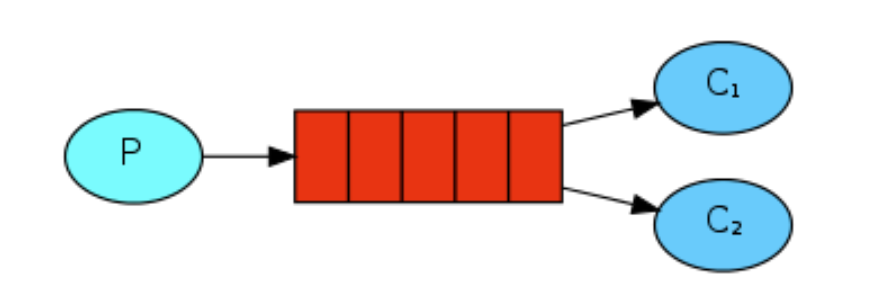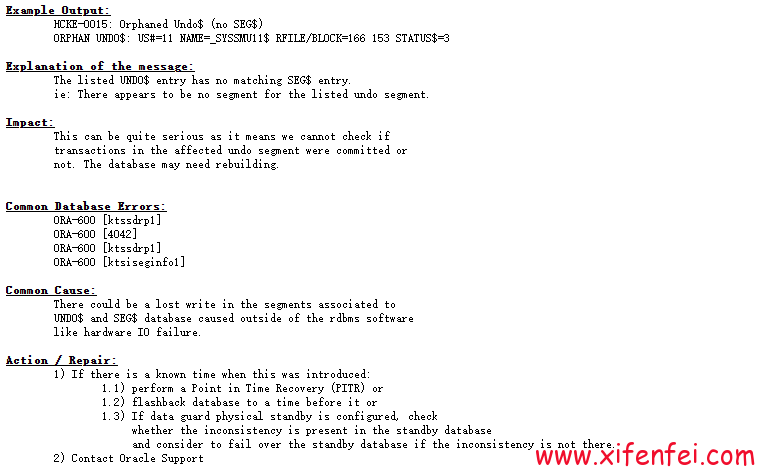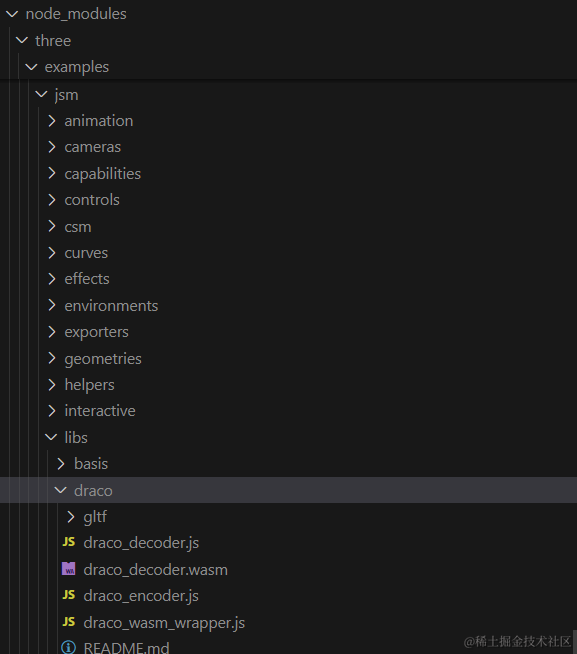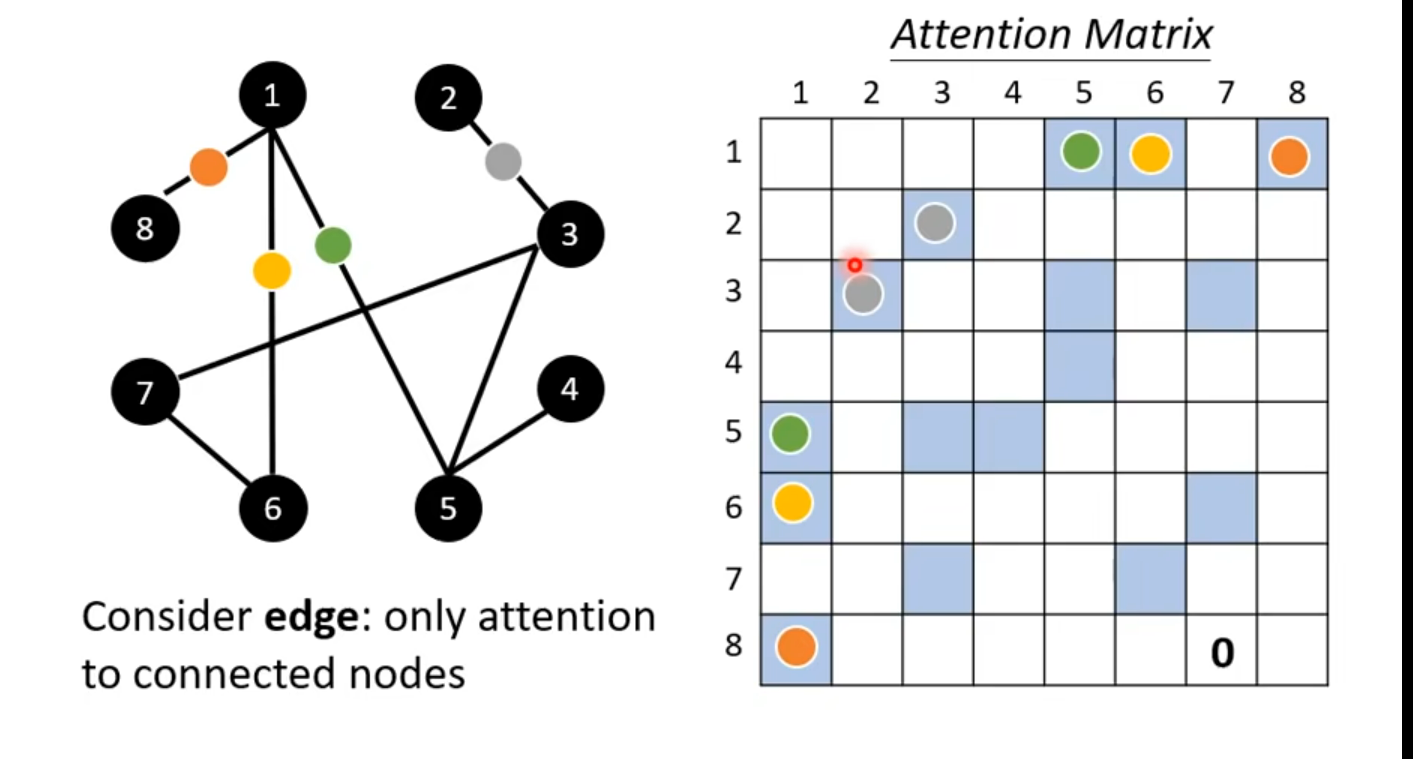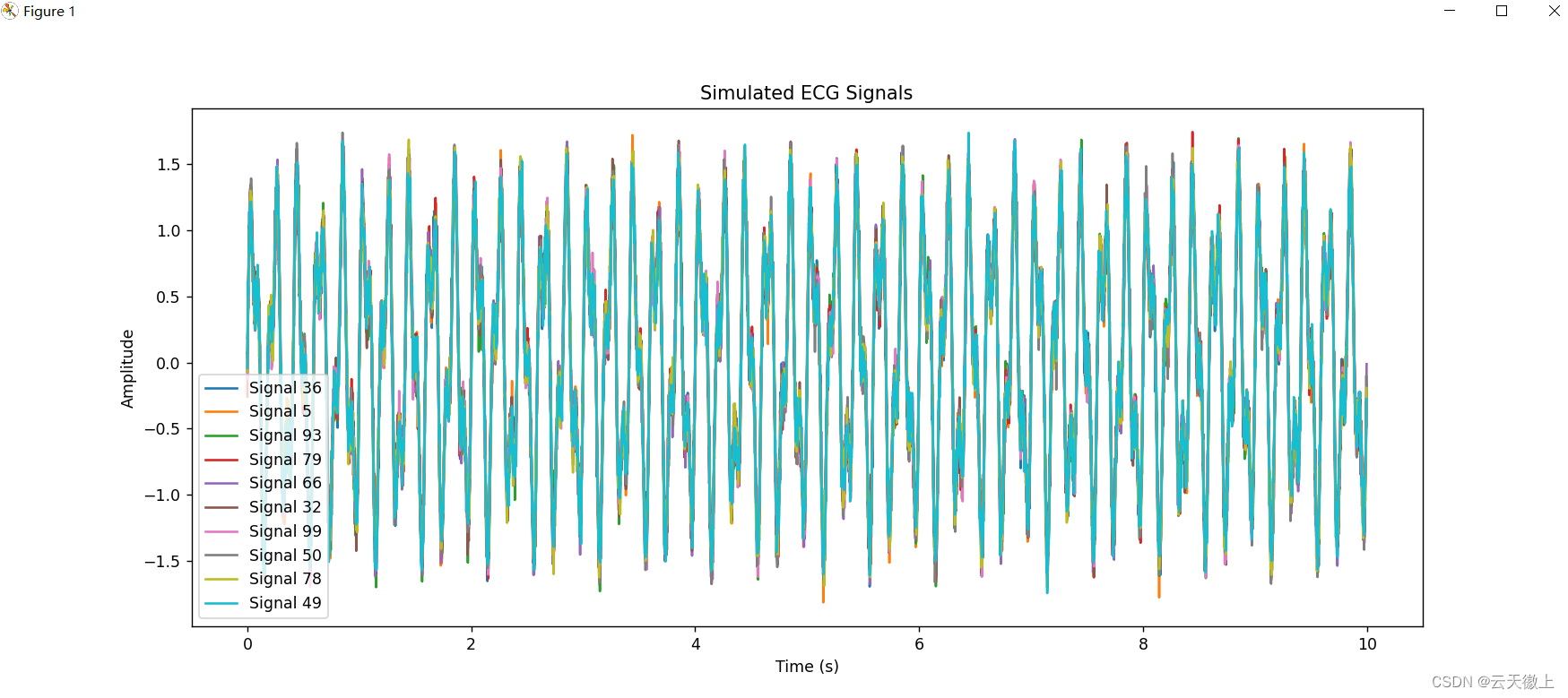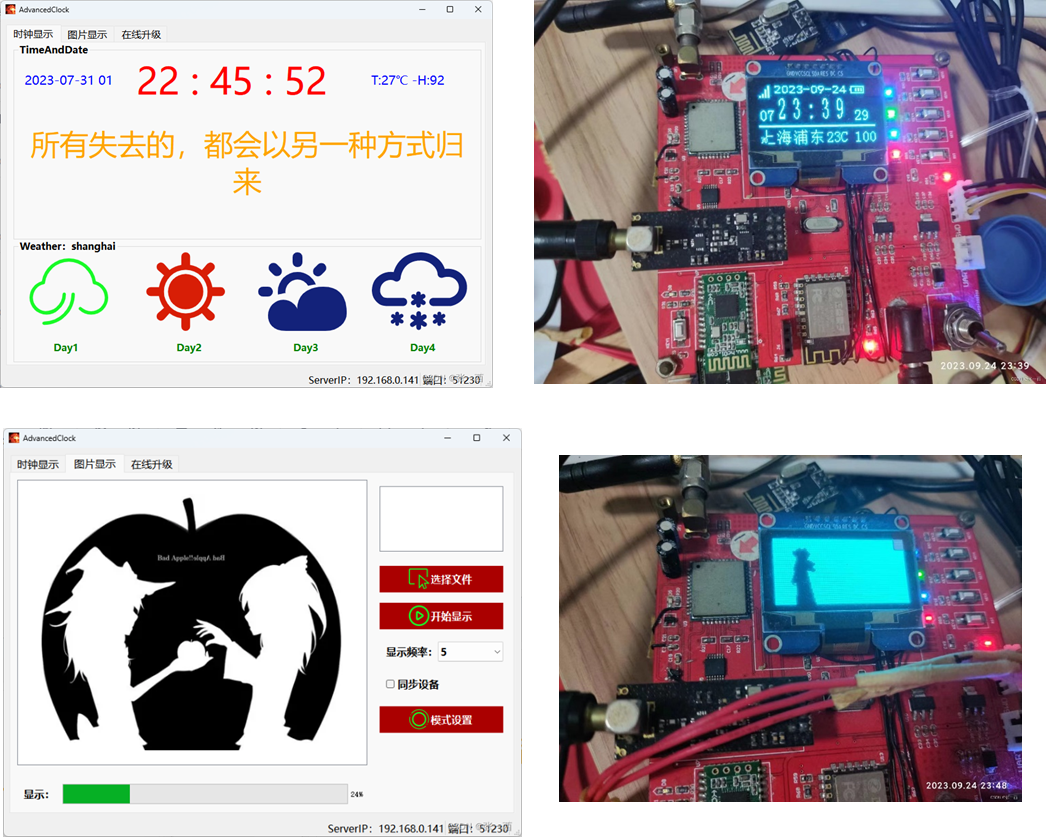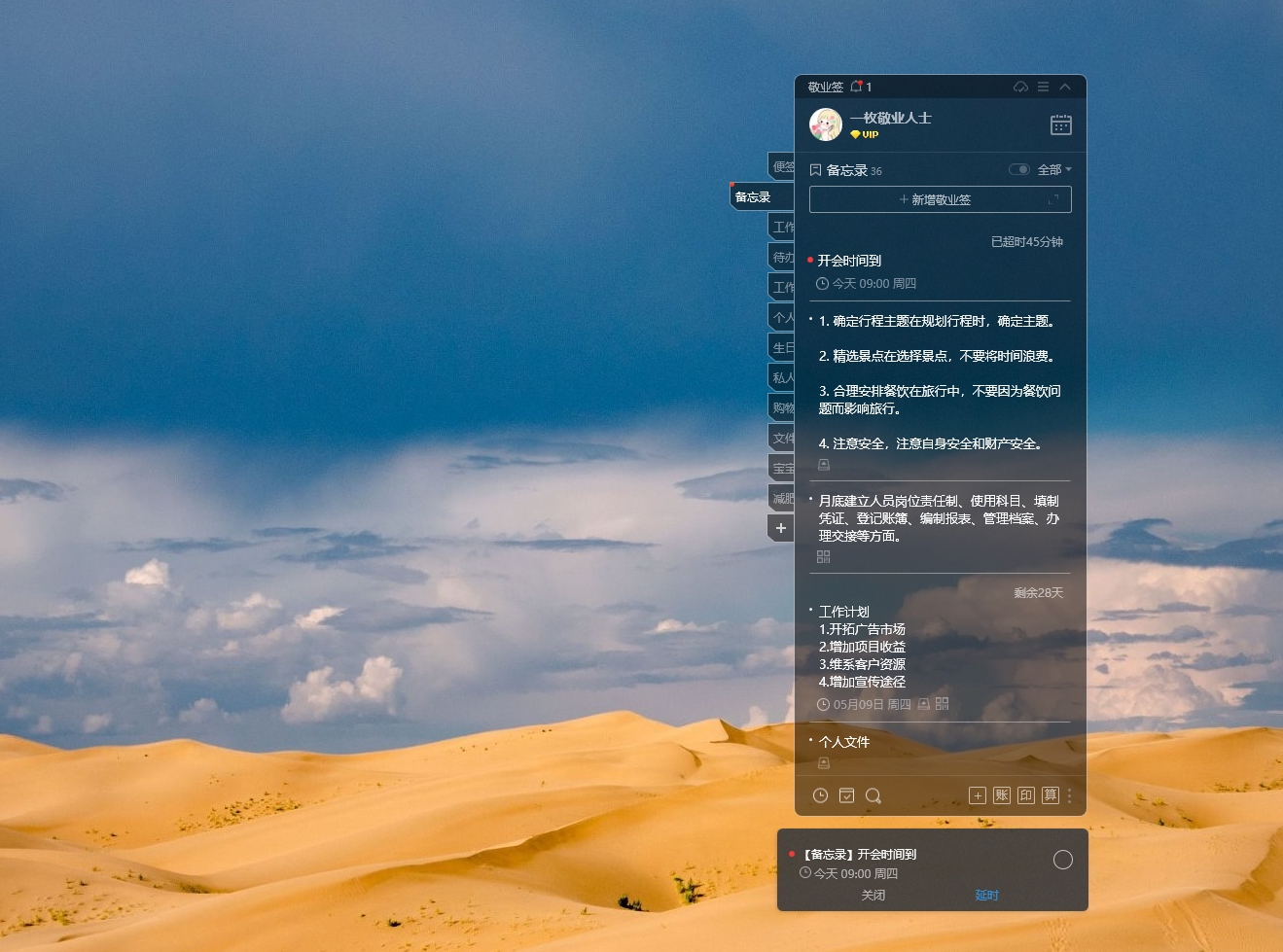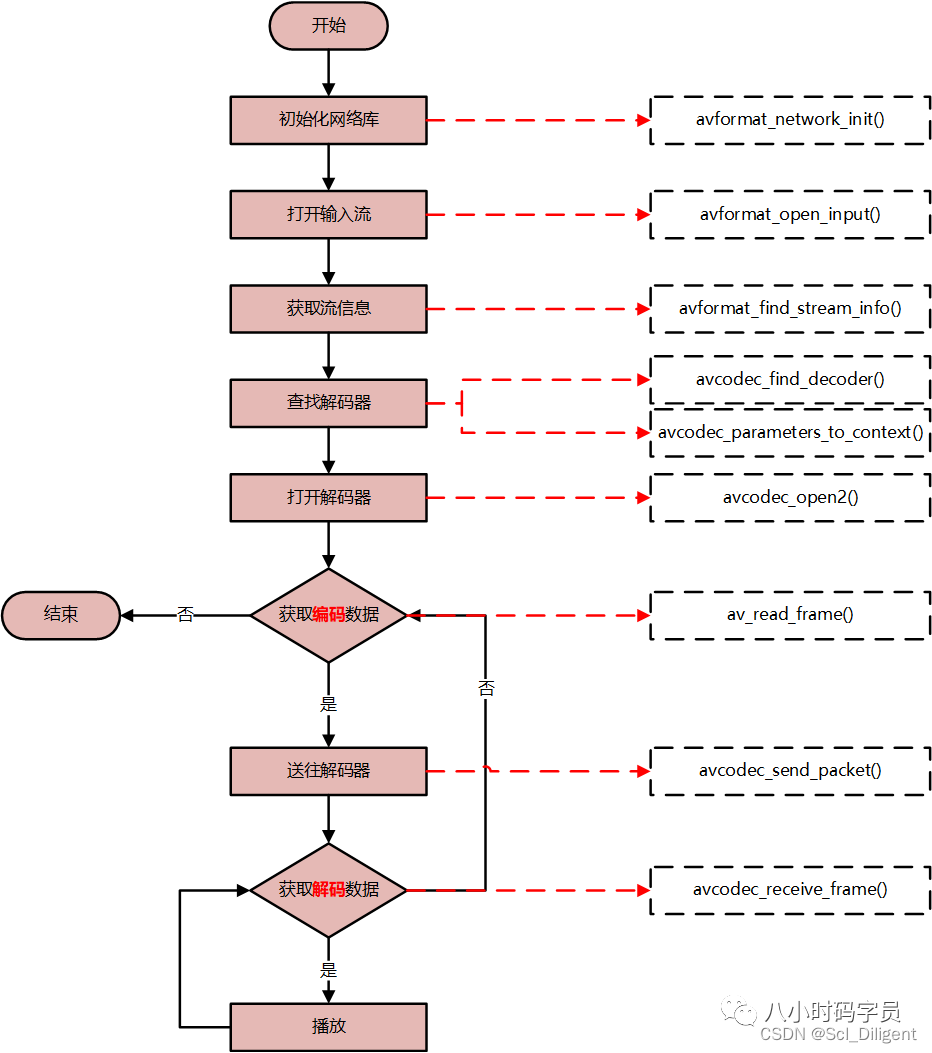1.多态
多态定义:多态(polymorphism)是指同一个方法调用由于对象不同可能会产生不同的行为
注意以下2点:
1.多态是方法的多态,属性没有多态。
2.多态的存在有2个必要条件:继承、方法重写
class Animal:
def shout(self):
print("动物叫了一声")
class Dog(Animal):
def shout(self):
print("小狗,汪汪汪")
class Cat(Animal):
def shout(self):
print("小猫,喵喵喵")
def animalShout(a):
a.shout() #传入的对象不同,shout方法对应的实际行为也不同。
animalShout(Dog())
animalShout(Cat())
2.特殊方法和运算符重载
Python的运算符实际上是通过调用对象的特殊方法实现的。
a = 20
b = 30
c = a+b
d = a.__add__(b)
print("c=",c)
print("d=",d)
#执行结果
#c= 50
#d= 50
常见的特殊方法统计如下:
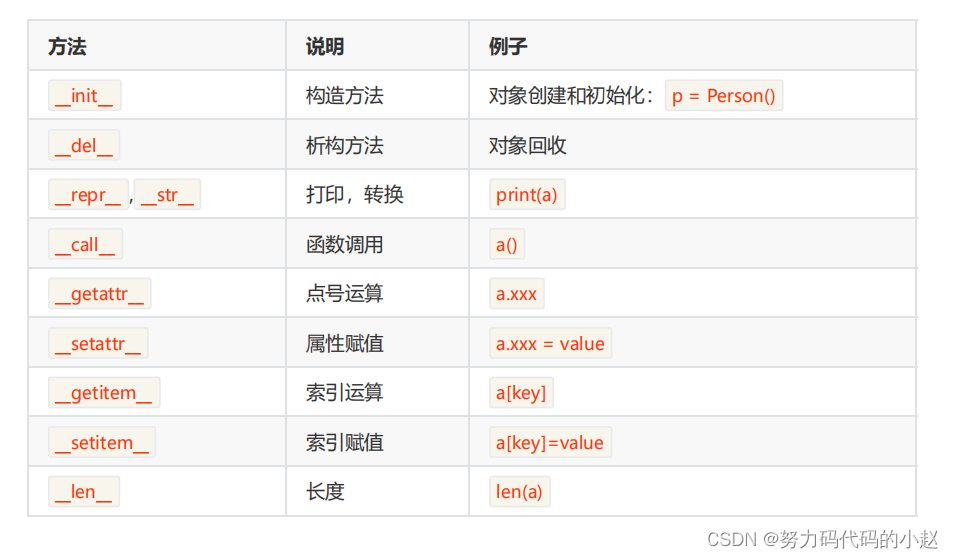
每个运算符实际上都对应了相应的方法,统计如下:
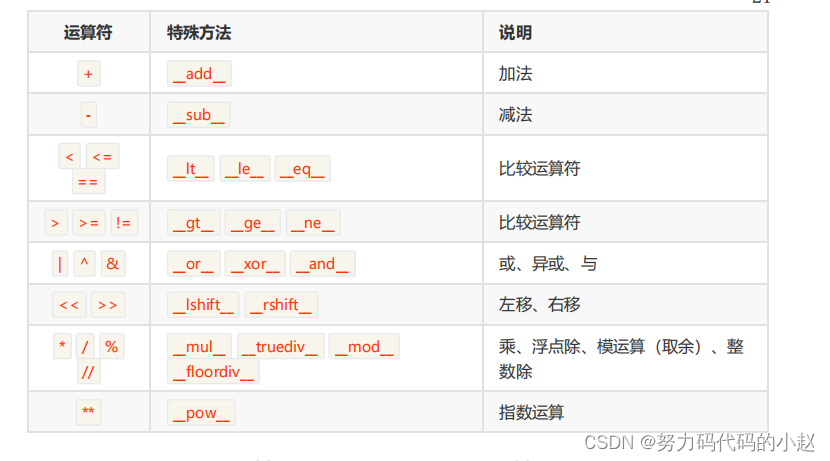
可以通过重写上面的特殊方法,实现“运算符的重载”(Python本身不支持重载)
class Person:
def __init__(self,name):
self.name = name
def __add__(self, other):
#isinstance判断一个对象的变量类型
if isinstance(other,Person):
return "{0}--{1}".format(self.name,other.name)
else:
return "不是同类对象,不能相加"
def __mul__(self, other):
if isinstance(other,int):
return self.name*other
else:
return "不是同类对象,不能相乘"
p1 = Person("高淇")
p2 = Person("高希希")
x = p1 + p2
print(x)
print(p1*3)
#执行结果:
#高淇--高希希
#高淇高淇高淇
3.特殊属性
Python对象中包含了很多双下划线开始和结束的属性,这些是特殊
属性,有特殊用法。这里我们列出常见的特殊属性:
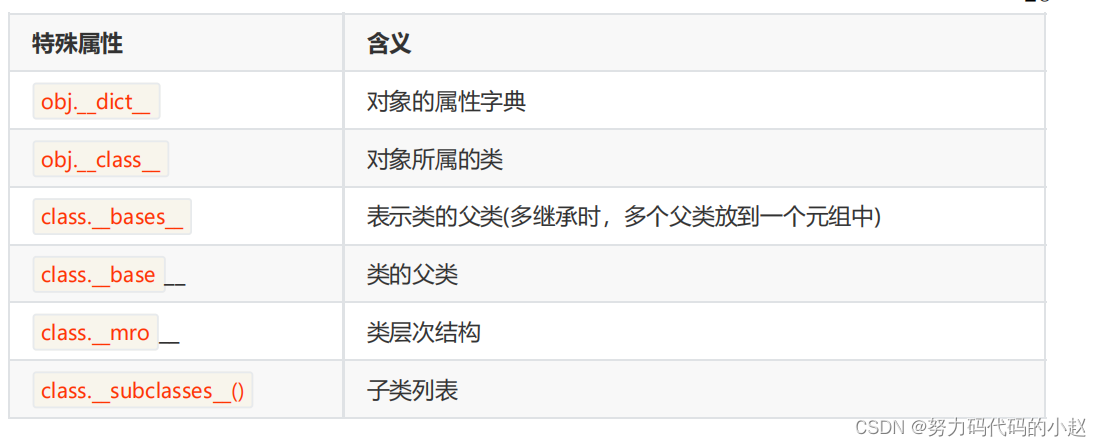
class A:
pass
class B:
pass
class C(B,A):
def __init__(self,nn):
self.nn = nn
def cc(self):
print("cc")
c = C(3)
print(c.__dict__)
print(c.__class__)
print(C.__bases__)
print(C.mro())
print(A.__subclasses__())
执行结果: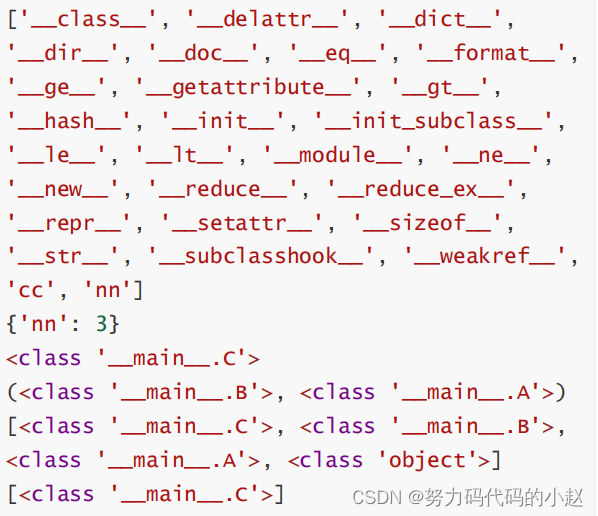
4.组合
除了继承,“组合”也能实现代码的复用!“组合”核心是“将父类对象
作为子类的属性”。
1.is-a 关系,我们可以使用“继承”。从而实现子类拥有的父类的方法和属性。 is-a 关系指的是类似这样的关系:狗是动物,dog is animal。狗类就应该继承动物类。
2.has-a 关系,我们可以使用“组合”,也能实现一个类拥有另一个类的方法和属性。 has-a 关系指的是这样的关系:手机拥有CPU。 MobilePhone has a CPU
class MobilePhone:
def __init__(self,cpu,screen):
self.cpu = cpu
self.screen = screen
class CPU:
def calculate(self):
print("计算,算个12345")
class Screen:
def show(self):
print("显示一个好看的画面,亮瞎你的钛合金大眼")
c = CPU()
s = Screen()
m = MobilePhone(c,s)
m.cpu.calculate() #通过组合,我们也能调用cpu对象的方法。相当于手机对象间接拥有了“cpu的方法”
m.screen.show()
#执行结果:
#计算,算个12345
#显示一个好看的画面,亮瞎你的钛合金大眼
